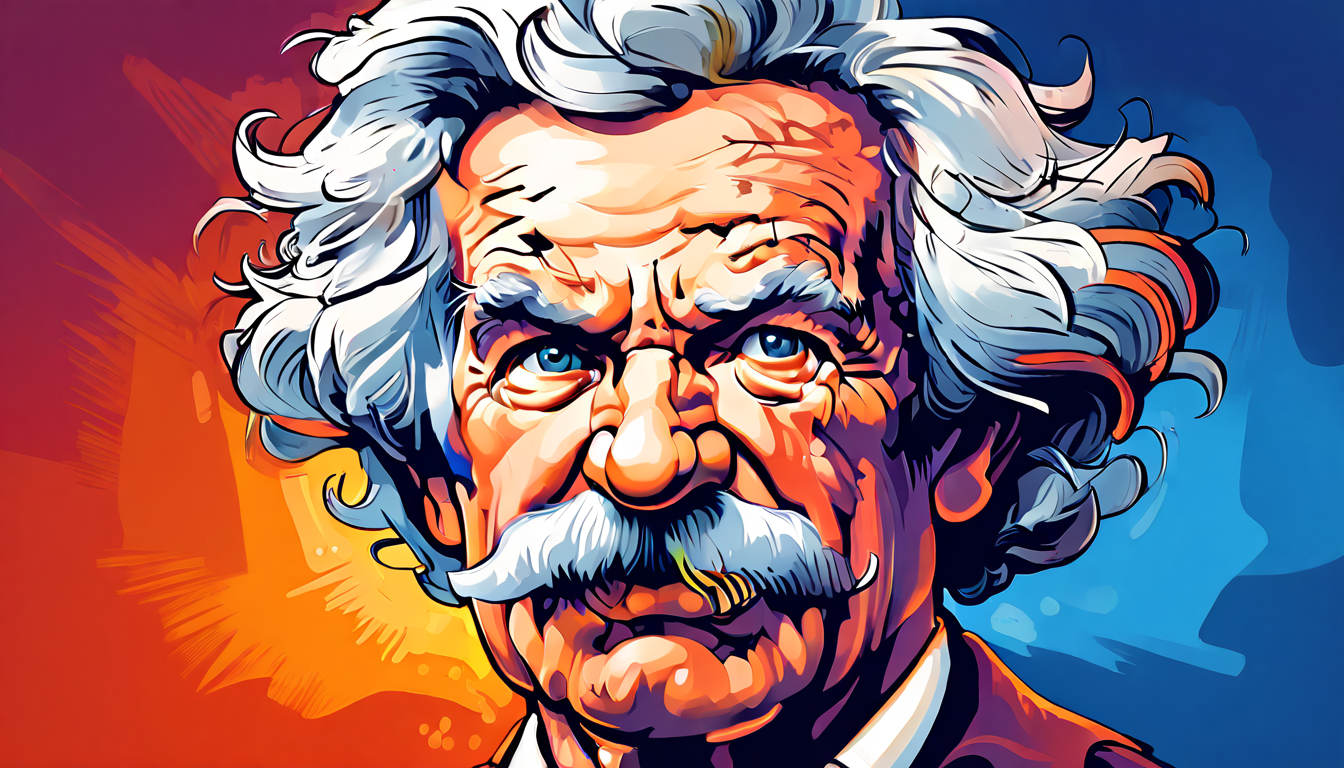Mark Twain: A Biography of Wit and Wisdom
Mark Twain, the pen name of Samuel Langhorne Clemens, was a celebrated American author and humorist best known for his witty writings on human nature. Born on November 30, 1835, in Florida, Missouri, Twain spent his early years in Hannibal, Missouri, a small town on the Mississippi River that later became the inspiration for many of his famous works.
Early Years and Career
Twain's early life was marked by hardship and struggle. His father, John Marshall Clemens, was a storekeeper who died when Twain was just 11 years old. This event led to Twain leaving school and beginning his career as a typesetter at the Hannibal Journal, a local newspaper. In 1853, Twain moved to New York City to pursue a career in writing and eventually became a steamboat pilot on the Mississippi River, an experience that greatly influenced his later writings.
Humorist and Author
Twain's writing career began to flourish in 1867 when he began writing humorous articles and short stories for newspapers and magazines. His wit and satire quickly earned him a reputation as a master humorist. In 1869, he published his first book, The Innocents Abroad, a travelogue that poked fun at American tourists in Europe. The book was a huge success and established Twain as a major literary figure.
Rise to Fame
The publication of The Adventures of Tom Sawyer in 1876 cemented Twain's status as a prominent author. The book's success was followed by The Adventures of Huckleberry Finn in 1885, considered by many to be Twain's masterpiece. The book's themes of racism, morality, and the human condition continue to resonate with readers today.
Notable Friendships and Travels
Twain's friendships with notable figures such as Nikola Tesla, Thomas Edison, and William James reflect his broad range of interests and passions. He was also a world traveler, visiting Europe, Hawaii, and other parts of the world, which inspired many of his writings.
Views on Society and Human Nature
Twain's writings often critiqued societal norms and human behavior. He was a fierce advocate for social justice and equality, which is evident in his works such as The $30,000 Bequest and What is Man?. His views on human nature were both humorous and poignant, often highlighting the contradictions and flaws of human beings.
Personal Struggles and Financial Issues
Despite his success as a writer, Twain faced significant financial struggles later in life. His investments in the Paige typesetting machine and the Kaolatype, a mechanical writing system, ultimately led to bankruptcy. He also suffered personal losses, including the death of his wife, Olivia, in 1904.
Legacy and Contributions to American Literature
Mark Twain's contributions to American literature are immeasurable. He is widely regarded as one of the greatest American writers of all time, and his works continue to be widely read and studied today. His legacy extends beyond literature, as his wit and satire continue to inspire social commentary and critique.
- Major Works:
- The Adventures of Tom Sawyer (1876)
- The Adventures of Huckleberry Finn (1885)
- The Innocents Abroad (1869)
- Roughing It (1880)
- What is Man? (1906)
Mark Twain died on April 21, 1910, at the age of 74, leaving behind a legacy of wit, wisdom, and timeless literature that continues to captivate readers around the world.







